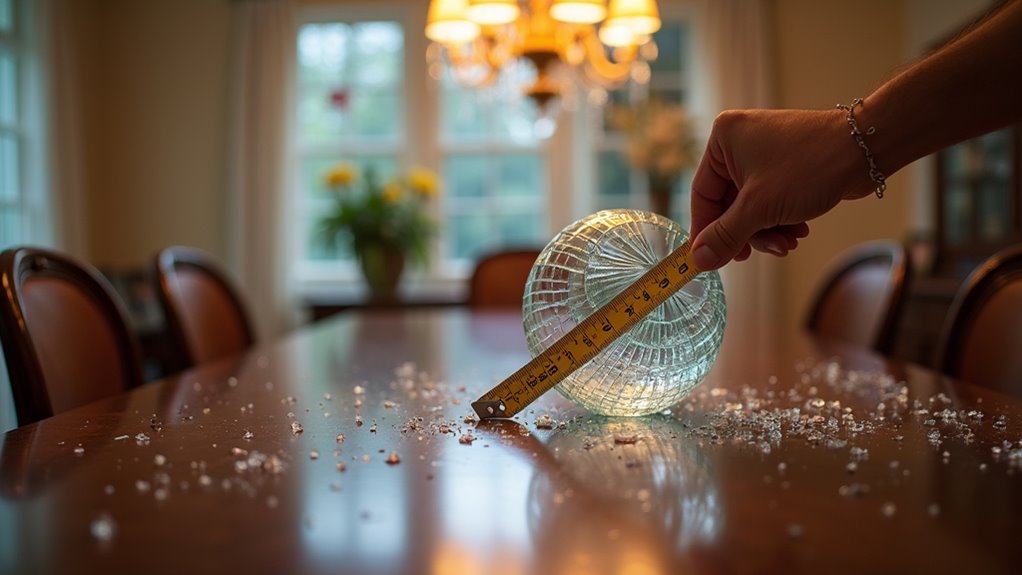Finding the right replacement glass for dining room light fixtures requires measuring the fitter diameter, which typically ranges from 2¼” to 12″ in standard sizes. Homeowners must document the current attachment method, whether screw rings or tension springs, and record glass thickness specifications. Accurate measurements using metal tape measures ensure proper fit and secure installation. Multiple suppliers offer blown glass options with varying delivery timeframes and cost structures. Professional guidance helps navigate fixture compatibility and aesthetic considerations for optimal results.
Key Takeaways
- Measure the fitter diameter, glass thickness, and attachment method of your current shade for proper compatibility.
- Record height and width dimensions using metal tape measures, noting measurements to the nearest ⅛ inch.
- Compare suppliers including major retailers, specialty distributors, and antique specialists for best selection and pricing.
- Consider total costs including materials, labor rates ($50-$100/hour), shipping, and delivery timeframes for budget planning.
- Match glass opacity, finish, and style with your dining room’s color palette and lighting requirements.
Identifying Your Current Glass Shade Specifications
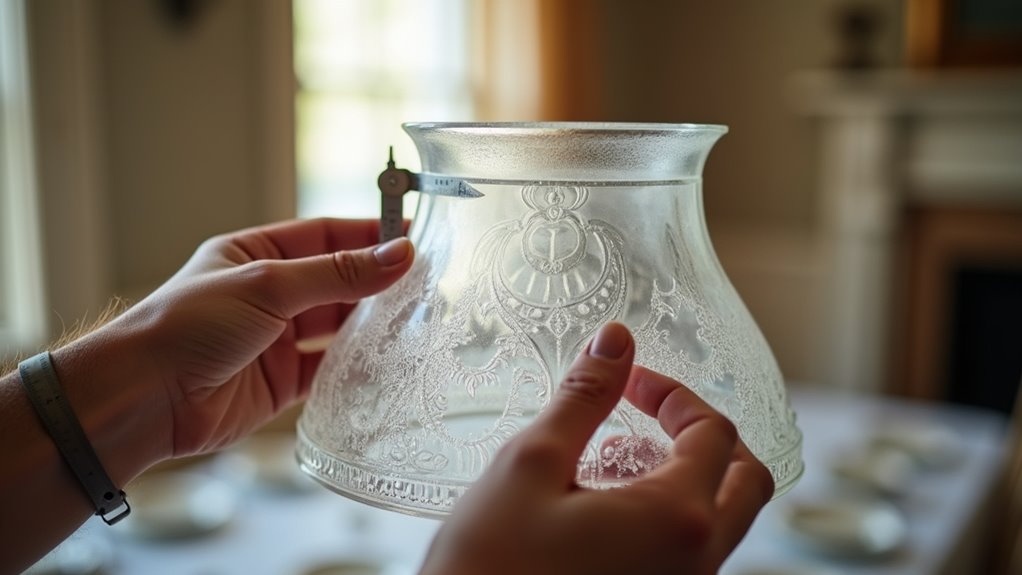
Before selecting replacement glass for a dining room light fixture, one must systematically document the existing shade’s physical and functional characteristics.
Begin by measuring the fitter diameter—the mounting hole where the shade connects to the fixture.
Record the glass thickness using calipers or visual comparison, as measurements typically range from 0.08 to 0.25 inches.
Document the attachment method, whether screw rings, tension springs, clips, or slip-fit fittings.
Note the shade’s shape (bowl, globe, bell, or drum) and glass variety including clear, frosted, textured, or colored finishes.
Identify decorative features such as etched patterns, beveled edges, or painted accents.
Assess light transmission properties and any special coatings. Consider how the replacement glass will work with your dining table dimensions to ensure proper light distribution and visual balance.
Professional trade programs can provide additional discounts when working with lighting specialists who may assist in sourcing specific replacement glass components.
This comprehensive documentation ensures optimal shade compatibility during replacement selection.
Taking Accurate Measurements for Proper Fit
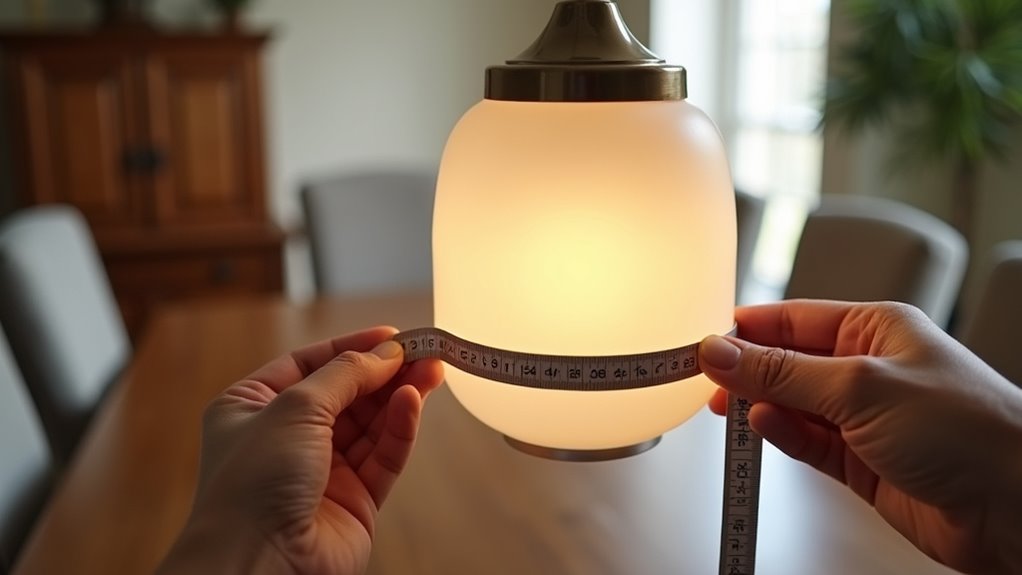
Once the existing shade specifications have been documented, precise measurements become the foundation for selecting compatible replacement glass.
Three critical dimensions determine proper fit: fitter size, height, and width. The fitter size represents the outer diameter of the lip that inserts into the fixture holder, with common standard sizes including 2¼”, 3¼”, 4″, 6″, 8″, 10″, and 12″.
Height measurement extends vertically from the fitter base to the shade’s lowest point, avoiding slanted measurements on tapered designs.
Width captures the diameter at the shade’s widest point, whether top, middle, or bottom.
Effective shade measurement techniques require metal tape measures or calipers for precision, recording dimensions to the nearest ⅛ inch.
Following fitting compatibility guidelines ensures secure installation without excessive force that could damage components.
Finding the Best Suppliers and Brand Options
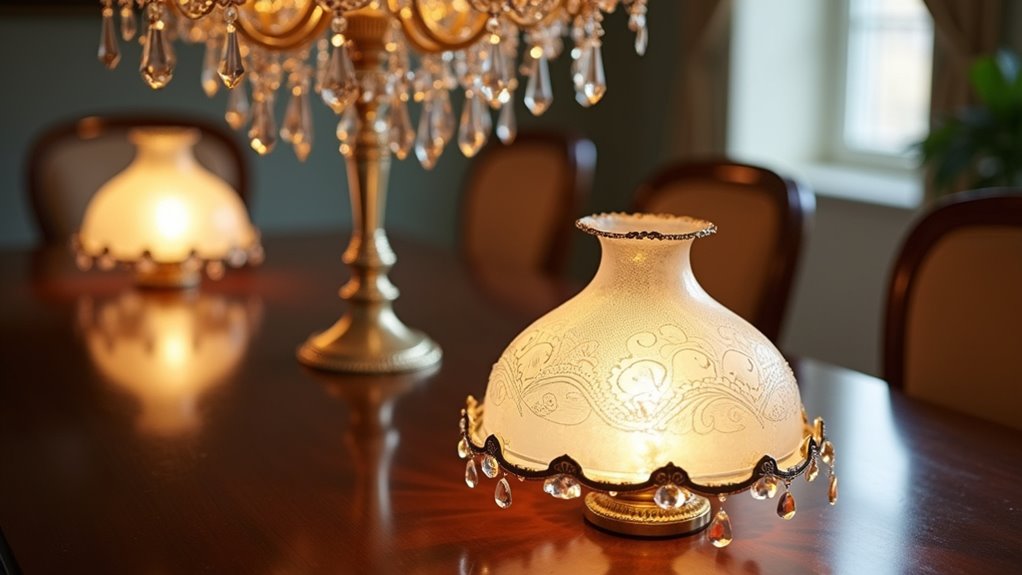
The replacement glass market offers distinct supplier categories, each serving specific customer needs and fixture requirements. Major retailers like Home Depot provide high-quality blown glass shades with quick-ship options and in-store pickup convenience for DIY installations.
Specialty distributors such as Destination Lighting offer over 50 glass shade types with advanced filtering capabilities for size, color, and finish specifications. Antique specialists like Antique Lamp Supply focus on hand-cut, quilted, and vintage reproduction options for restoration projects.
Comprehensive supplier comparisons reveal that Lighting Depot excels in branded replacement glass from manufacturers like Minka Group and Quorum, while Grand Brass Lamp Parts maintains extensive inventory covering antique student, torchiere, and schoolhouse designs.
Brand reviews consistently highlight the importance of matching fitter sizes and specialty finishes when selecting suppliers for specific fixture requirements. Home Depot also offers professional installation services for complex fixtures requiring electrical assessments and specialized expertise beyond basic glass replacement.
Evaluating Costs and Delivery Considerations
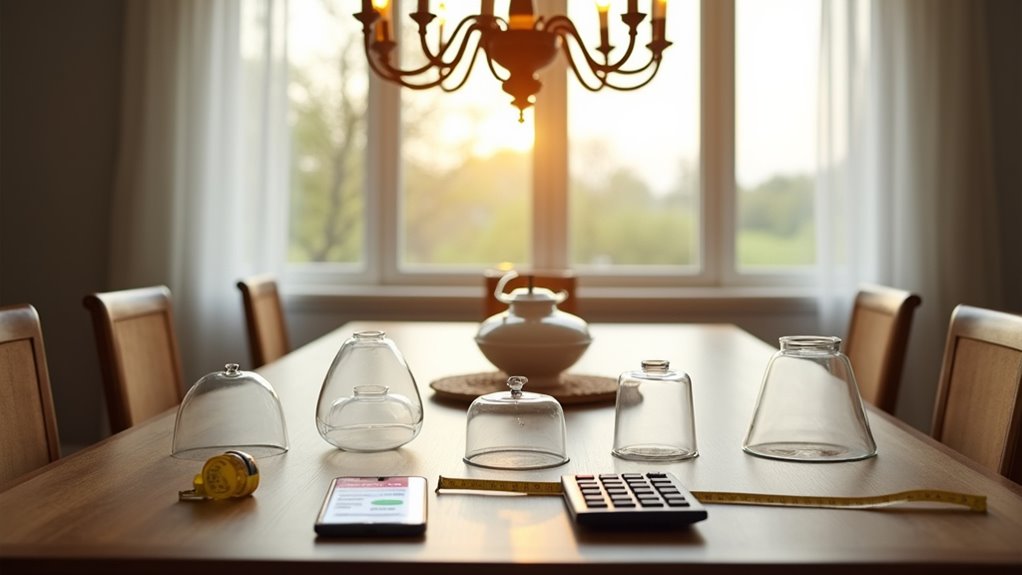
Budgeting for replacement dining room light glass requires careful analysis of multiple cost variables that extend beyond the initial purchase price.
Material costs fluctuate based on glass thickness, size, and design complexity, while labor charges range from $50-$100 per hour for 1-2 hour installations. Fixture complexity significantly impacts pricing—chandeliers cost $220-$1,750 compared to simple pendants.
Material specifications and fixture complexity create significant price variations, with chandelier replacements commanding substantially higher costs than basic pendant installations.
Geographic location affects both labor rates and shipping fees, with metropolitan areas commanding premium pricing.
Comprehensive cost analysis must include delivery options, which vary from days to weeks depending on customization requirements. Shipping costs correlate with glass weight, size, and fragility levels.
Expedited delivery services accommodate urgent replacements for additional fees. Professional installation provides warranty coverage and code compliance, while DIY approaches reduce labor expenses but increase damage risk and potential replacement costs.
When selecting replacement glass, ensure the new fixture maintains proper positioning standards with 30-36 inches clearance above your dining table surface for optimal functionality and safety.
Selecting Style Elements That Match Your Space

How effectively replacement glass integrates with existing dining room aesthetics depends on systematic evaluation of fixture compatibility and design coherence.
Technicians must first identify fixture mounting configurations and measure glass dimensions precisely, including diameter, height, and fitter specifications.
Design harmonization requires analyzing the room’s color palette and selecting appropriate glass finishes—clear for maximum illumination, frosted for diffused lighting, or textured varieties like seeded or crackle for visual interest.
Contemporary aesthetic trends favor mixed-finish combinations and bold accent colors that either complement existing glassware or create intentional contrast points.
Installation success depends on matching glass opacity to functional lighting requirements while ensuring heat tolerance specifications align with bulb wattage ratings.
Proper style selection balances room scale proportions with fixture prominence, creating cohesive visual hierarchy throughout the dining space.
Modern geometric pendant designs featuring frosted glass globes have become increasingly popular for their ability to provide uniform light distribution while maintaining sophisticated visual appeal.
